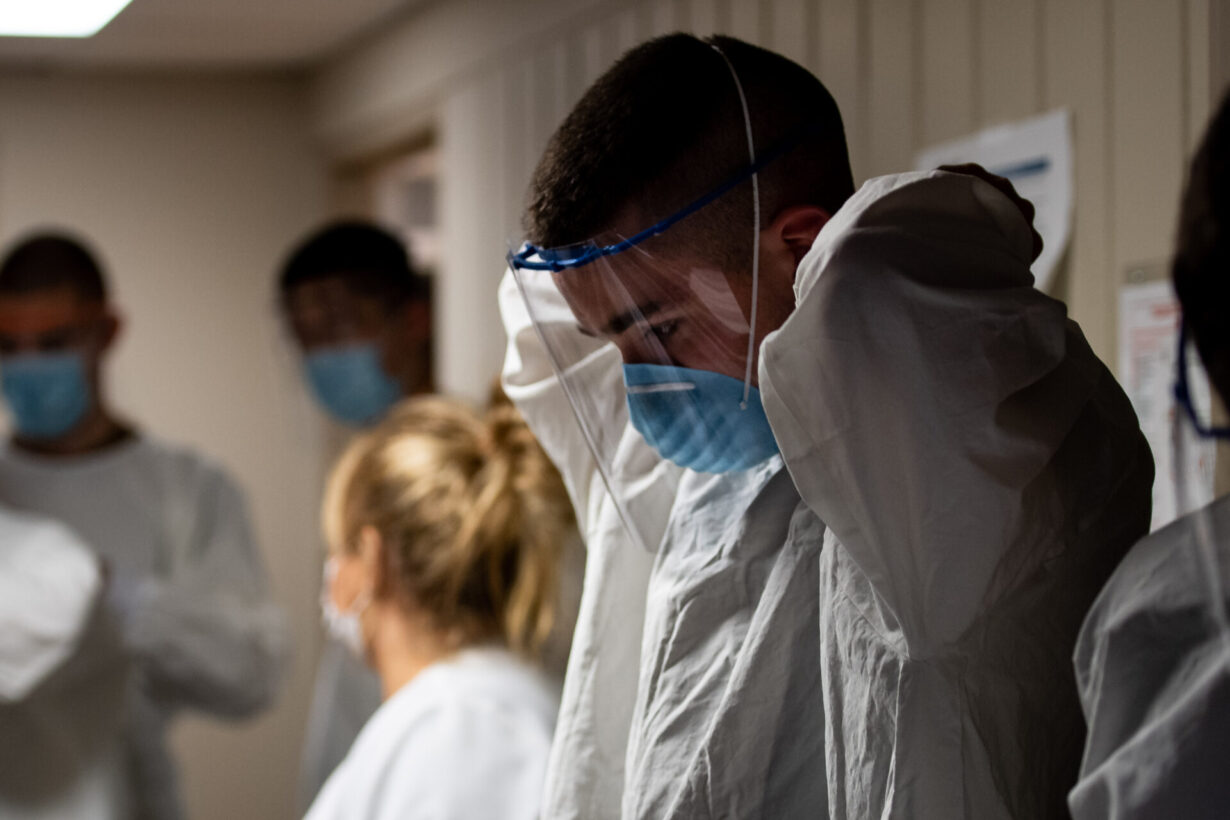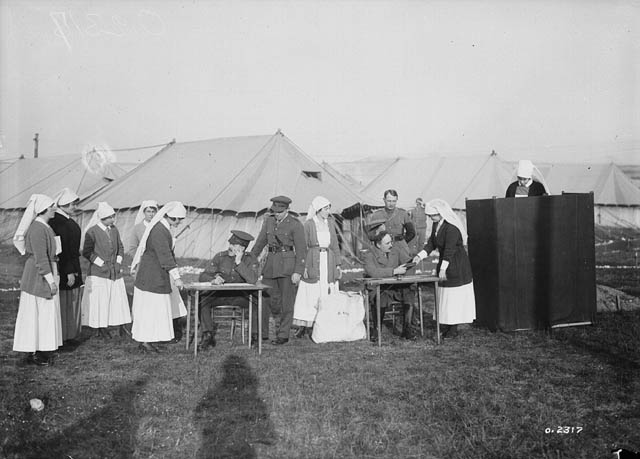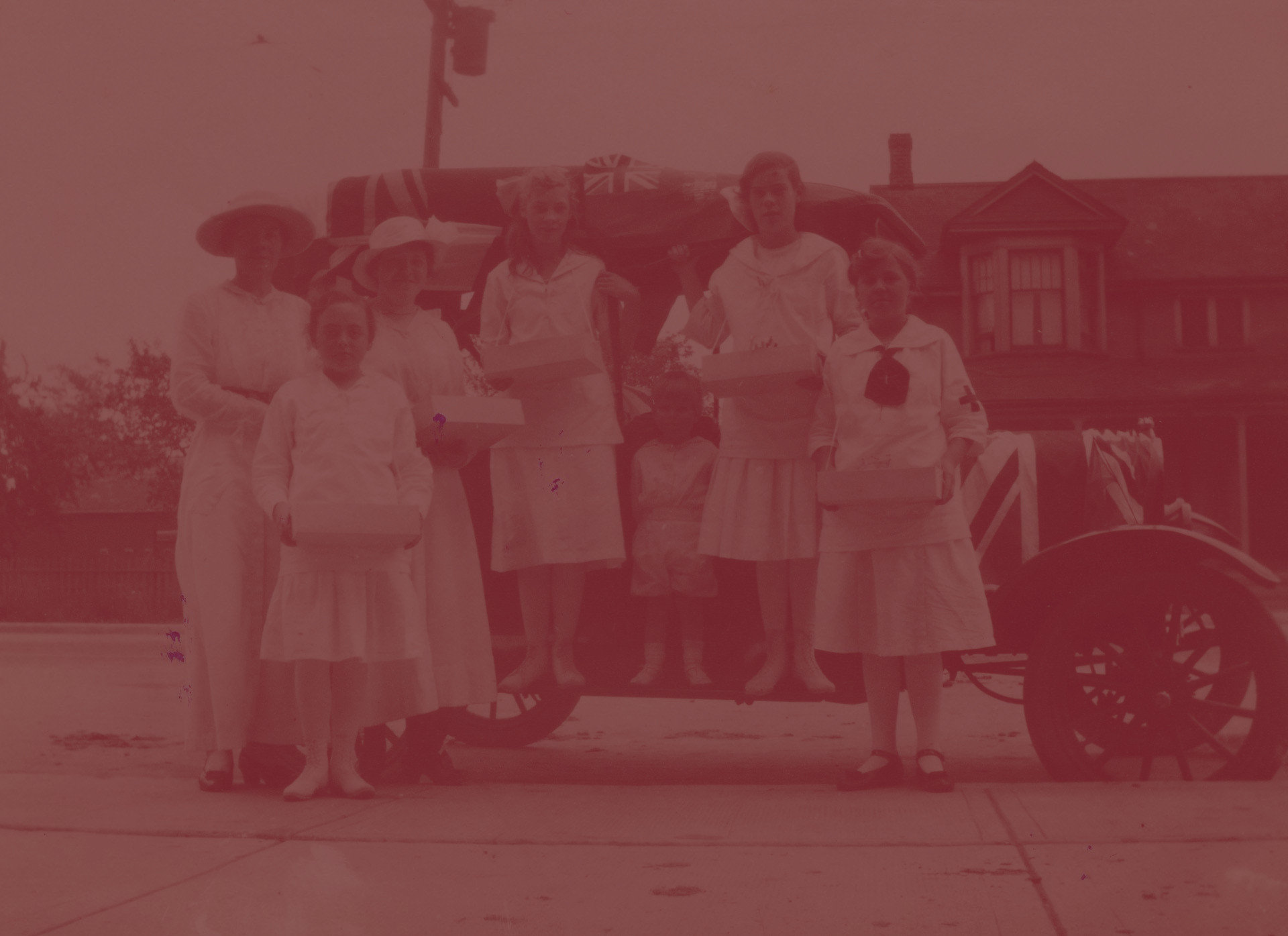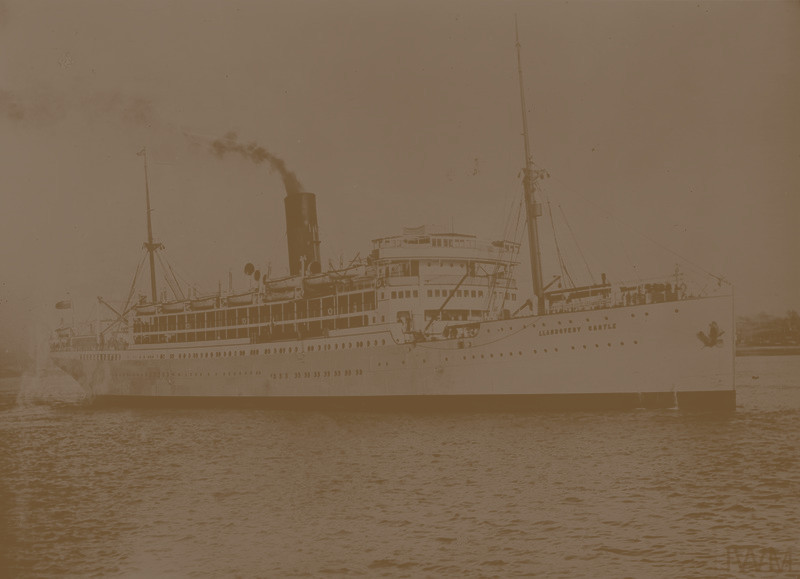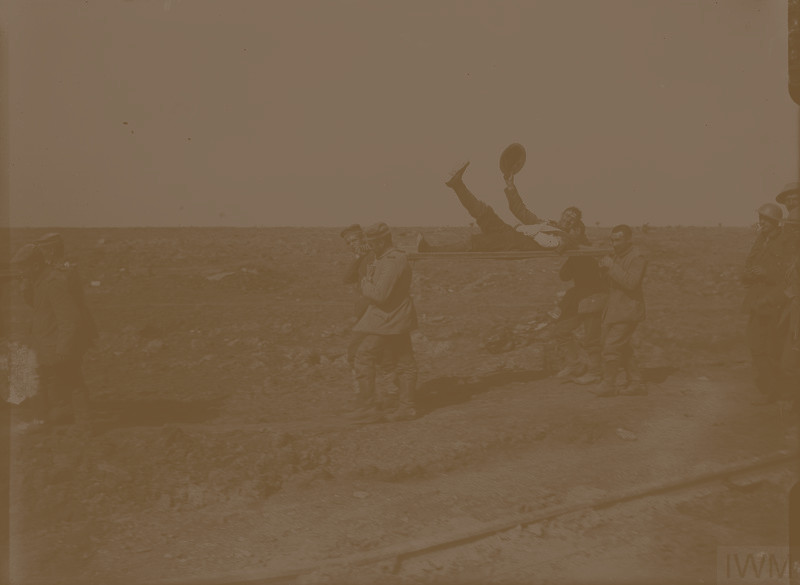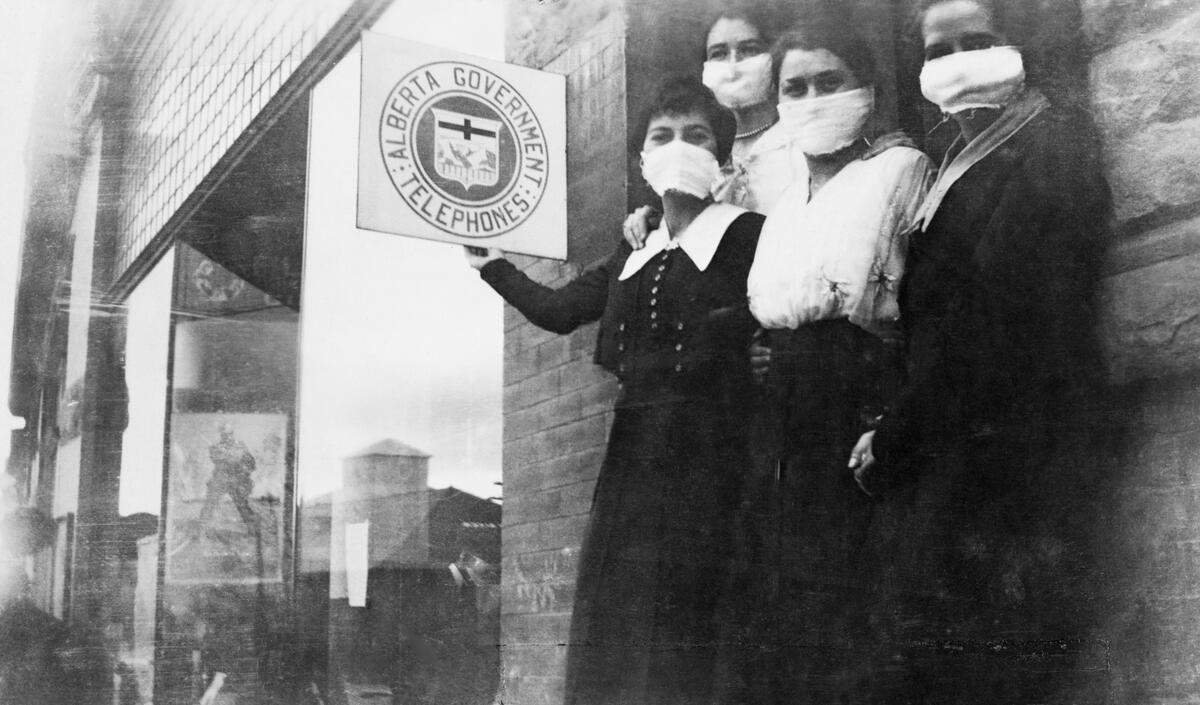
The ‘Spanish’ Influenza Pandemic of 1918
Image courtesy of the Glenbow Museum and Archives
World War I may have ended on November 11, 1918, but the wave of death sweeping the world did not. In 1918 an influenza pandemic, known, mistakenly, as the Spanish flu, spread around the world killing an estimated 50 million people, with most deaths occurring in the lethal second wave of late 1918. In absolute numbers, the Spanish flu was the deadliest pandemic in history, with the exception of COVID-19.
Caused by a virulent strain of the H1N1 flu virus and aided in its global spread by the movement of troops, the ‘Spanish’ flu was also distinctive because it disproportionately affected young, otherwise healthy individuals. The average age of death was 28, roughly the same average age of death as that of soldiers. Both at home and abroad, nurses were on the front lines of the 1918 influenza pandemic; some paid the ultimate price with their lives.

Letter from James William Stares to Mr. Irwin, July 21, 1918
“I have been feeling very tough lately. I have been in Hospital, suffering with the latest epidemic The “Spanish Flu” not a very nice thing to have.
Severe Headache, partial loss of legs, aches and pains all over, and feverish. For one week I just gazed at the ceiling, counting the flies, working out imaginary patterns on the paintwork, going through some of the Battles again, (in my mind) killing Germans by the thousands. The lad in the next bed thought it safer underneath the bed. (suppose I was delirious) I had to laugh when he told me about it. And say I had a peach of a nurse, she was a Dandy. I Love my Nurse.”
Where did the Spanish Flu Come from?
Historians and epidemiologists still debate the origin of Spanish Flu. Doctors at the time could not sequence the virus – they couldn’t even see viruses with the microscopes of the era! The origin of the virus is still unknown. Theories of the virus’ origins include: Étaples, France (similar cases in 1916), Shansi, China (similar case in 1917) and Haskell County, Kansas, USA (similar cases recorded not far from military training camps in January 1918). What we do know is that influenza did not come from Spain. It came to be called the Spanish flu because Spanish newspapers were the first to publish articles about the virus. This was not because Spain had the first cases, but rather because Spain was neutral in the First World War and did not censor its newspapers like most of the countries actively at war.
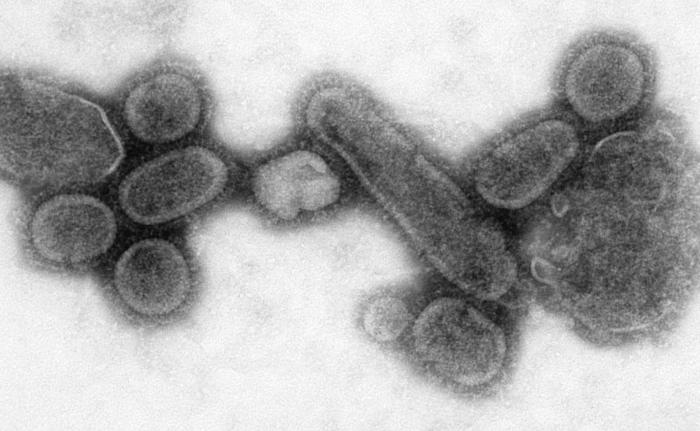
Symptoms
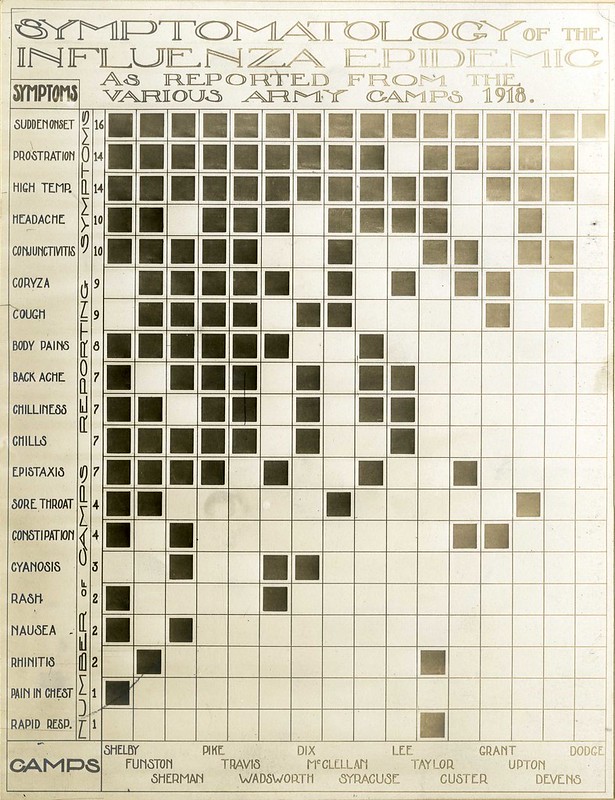
Some cases of influenza presented as a normal flu with high fever, aches and coughing. Severe pneumonia was often a complication of the Influenza. In more serious cases, some patients bled spontaneously from their noses, mouths and even eyes. Some coughed blood and some saw their skin change colour: first with mahogany spots appearing on their cheeks, then moving to their faces and hands, which turned blue from lack of oxygen. This was known as cyanosis and was a sign that death was near.
Image: Symptom chart (National Museum of Health and Medicine)
A timeline of the Spanish Flu
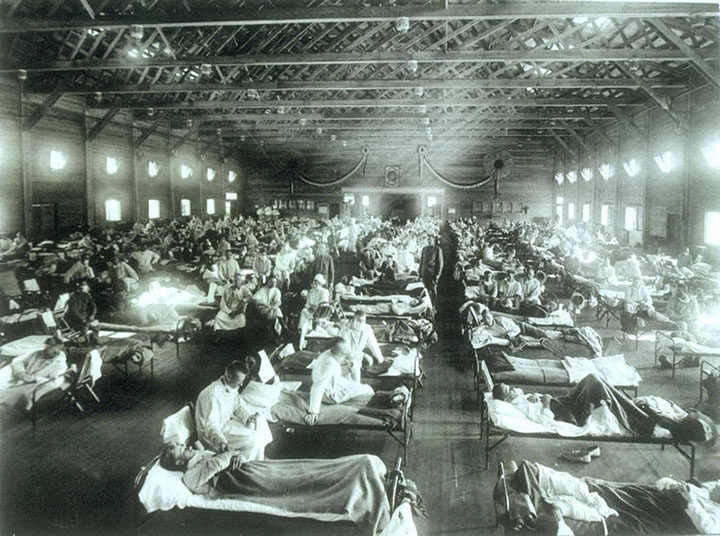
First Cases
The first known case of the new influenza pandemic was reported in early March 1918 at Camp Funston, a United States military training base, in Kansas. Within days there were over 500 soldiers sick; so many that camp directors had to commission an airplane hangar as a sick bay.
Image: Camp Funston (National Museum of Health and Medicine)
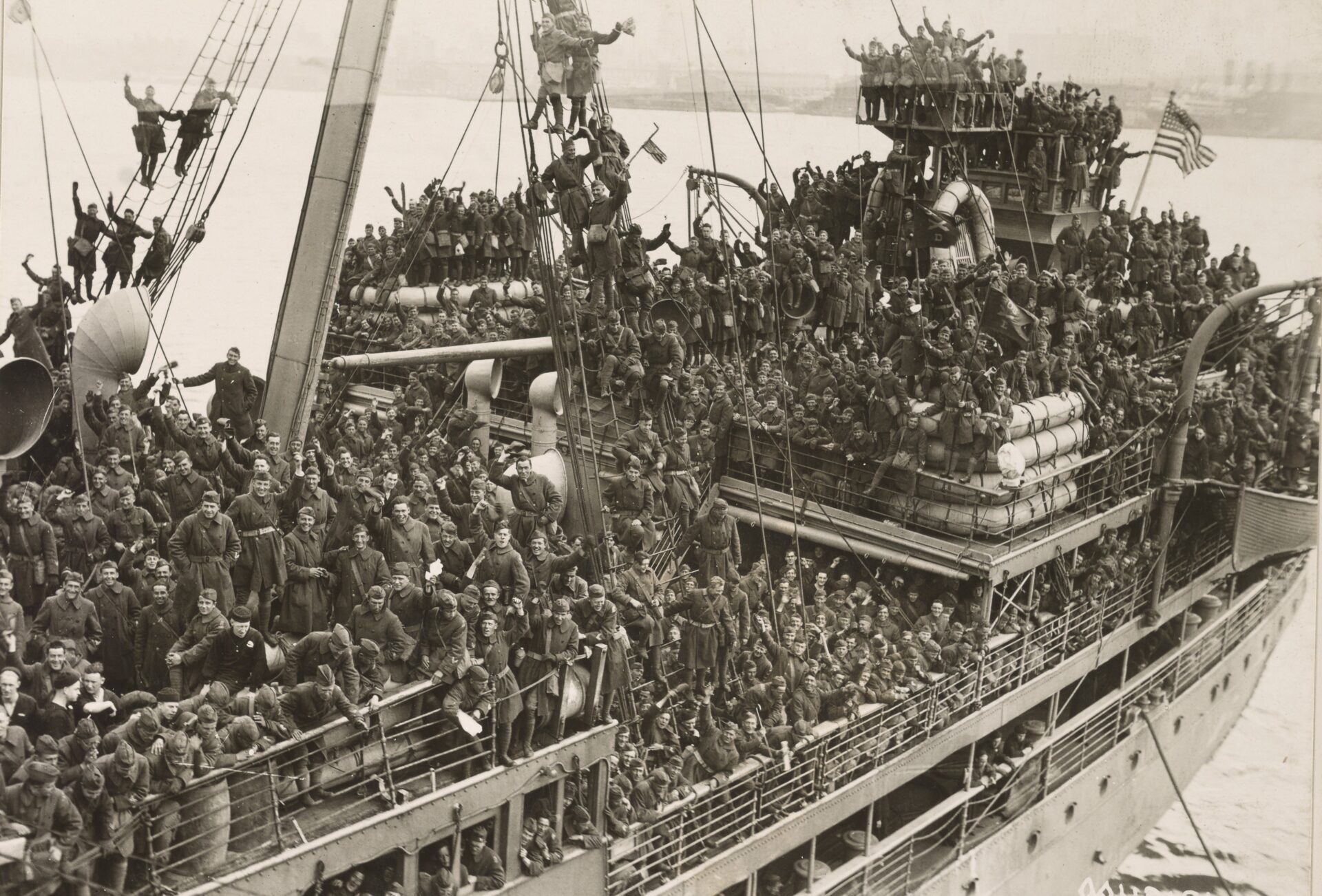
Moving Troops
The United States joined the war in 1917, and in 1918 they sent thousands of troops each over to Europe each day. Infected soldiers moved through port cities, such as New York and Boston, and brought the virus with them to the trenches of Europe. By April the virus was already ravaging the Western Front and spreading throughout Europe. Reports about the new illness first appeared in Spain, who was neutral in the war, in May 1918.
Image: American soldiers travelling to Europe (US National Archives)
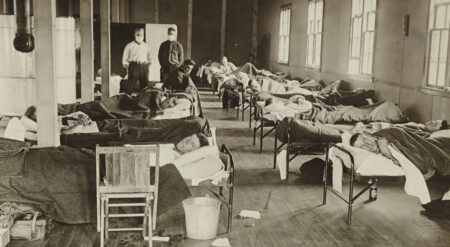
Affecting troops on the front
Influenza infects half of the British troops and three quarters of French troops. Although the first spring wave did not have a high mortality rate, it affected troops on the front, putting many of them temporarily out of commission during crucial moments of fighting.
Image: Ill troops in hospital (US National Archives)

A Second Wave
A new and far more deadly form of the virus appeared, spreading rapidly from southern England to the rest of the world. Viruses usually mutate to ease transmission. A normal mutation pattern, then, would favour milder forms of the virus, because those who are not too ill can go out and continue to spread the virus. Researchers speculate that the context of war may have had the opposite effect. Soldiers who were severely ill had to be moved in crowded transport to crowded hospitals, where they spread a severe form of the illness.
Image: Chart of Influenza cases (National Museum of Health and Medicine).
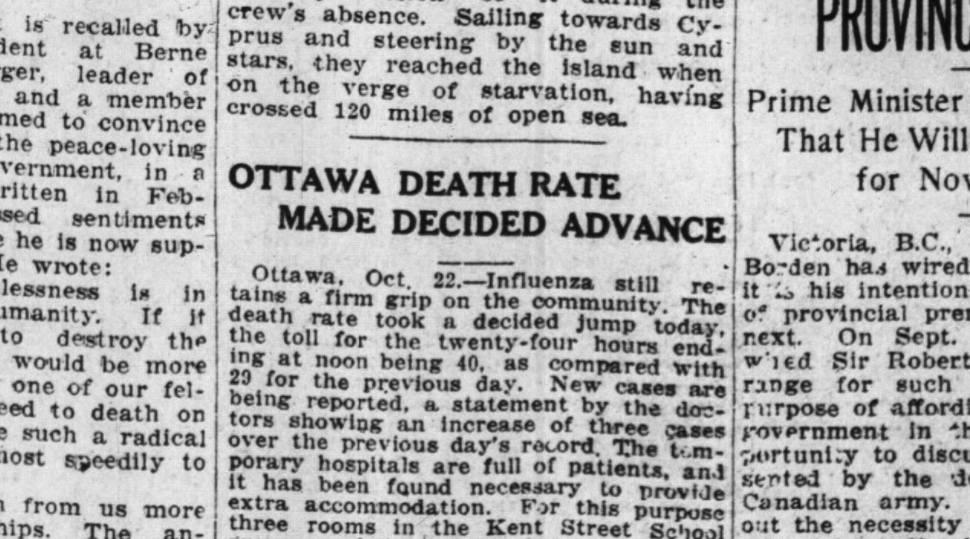
Front-page News
Influenza tore through almost every country around the globe. While the spring wave had made few headlines, with the front page to news still generally about the war, the fall wave could not be ignored. As hospitals overflowed, and as citizens mourned their dead, local officials announced laws and recommendations to prevent the spread of the disease.
Image: Front-page of “The Toronto World”, October 23, 1918 (Canadiana)
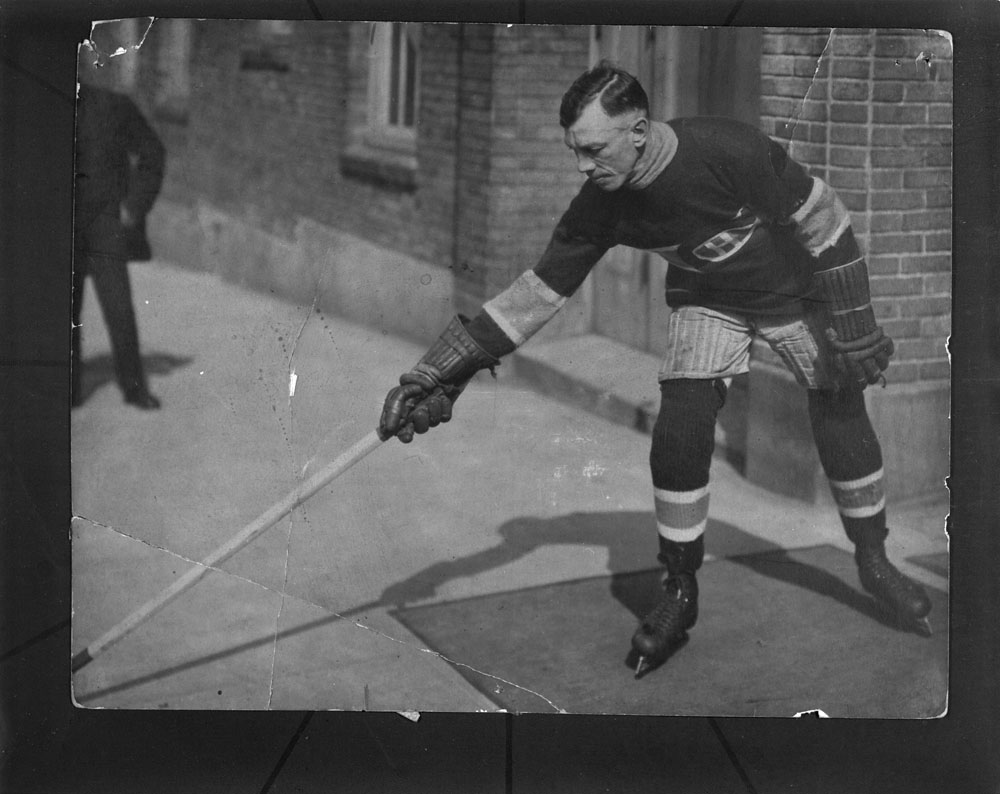
Third and Fourth Waves
A milder third wave (and in some places an additional fourth wave) occurred. The third wave was notable for cancelling the 1919 Stanley cup finals between Montreal and Seattle. By 1920 the virus had petered out. It had infected over 500 million people – one third of the world’s population at the time.
Image: Montreal Canadiens, Joe Hall, who died as a result of the Spanish Flu pandemic (Hockey Hall of Fame / Library and Archives Canada / PA-048994)
“I expect you have heard we have two epidemics – 1 Spanish Influenza, the other pneumonia. It has become so serious that theatres & picture shows are closed and churches are only allowed to have one service. The Arlington Hotel is turned into an hospital also Mossop House. You will be sorry to hear Frank Bresetor died of pneumonia last week … Fred Hall went to fetch the body & told Charlie there were 60 bodies on the train.”
—Letter from Emily Adams to George Walter Adams, Oct 22, 1918
Through their eyes

Nursing Sister Evelyn McKay was born in Galt, Ontario in 1892. She trained as a nurse at Toronto’s Grace Hospital in 1915 and went overseas in 1916. While working in the No. 3 Canadian General Hospital in Boulogne, France, she caught influenza. She was evacuated to another hospital, but her condition worsened, and she developed pneumonia. Sadly, she passed away November 4th, 1918 and is buried in Terlincthun British Cemetery near Boulogne.
Spanish Flu in Canada
It is estimated that around 55,000 people died of influenza and influenza-related illnesses in Canada. Most of these deaths occurred over a few short weeks in the fall of 1918. Many people believe that the second wave of influenza came to Canada with injured soldiers returning home from war. However, after the Llandovery Castle disaster, Canada no longer transported injured soldiers back to Canada on hospital ships. The second wave more likely came to Canada via the United States, with sick soldiers stopping in Canadian port cities such as Halifax and Montreal.
In 1918, Canada also mobilized the Siberian Expeditionary Force, a force of about 4000 men went to Russia to prevent Germany from gaining access to Russian oilfields. These men came from bases all over Canada and shipped westward with great secrecy. They also brought influenza with them wherever they stopped. City officials, unaware of the top-secret mobilization, were unprepared for the outbreaks that ensued.
With outbreaks of illness all over Canada happening almost simultaneously, there was an increased need for nurses and doctors. The nation, however, had a shortage of nurses because so many were serving overseas. Hundreds of women with and without medical training volunteered to serve on the home front as Volunteer Aid Detachment nurses, risking their lives to care for the ill and dying. These nurses helped by giving patients baths and medication, making sure they were hydrated and monitoring their vital signs, among other things.

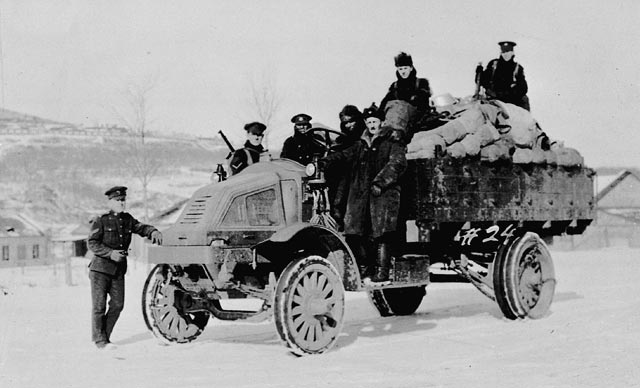
Cures for Influenza
There was no cure for influenza and scientists had not yet discovered antibiotics that would treat the pneumonia that often accompanied it. The most effective treatment and the best predictor for a positive patient outcome was support and care from skilled nurses.
This does not mean that scientists, doctors and researchers did not try to find a cure. In fact, there were many ‘cures’ for influenza, although they were at best ineffective and at worst, dangerous. In 1918, there was very little regulation of the pharmaceutical industry and numerous companies tried to turn the pandemic into a money-making opportunity. These companies marketed ‘preventive treatments’ and ‘cures.’ Most were benign, but some caused serious side effects if taken in large quantities.
Doctors also prescribed dangerously high doses of aspirin, and tested using medications with mercury, arsenic and strychnine (all of which are poisonous).
Preventative Measures
Around the world, doctors and public health officials relied on non-pharmaceutical interventions to prevent the spread of illness. Frequent non-pharmaceutical measures included closing schools, theatres and places of worship, quarantining ports, setting up isolation wards, advising the public to avoid crowds, keeping windows in buildings and hand washing. Some places also recommended wearing a gauze mask.
A repeating history?
When the COVID pandemic hit Canada in 2020, Canadians once again faced a large-scale pandemic.
Think: How was Canada’s response to the 1918 influenza pandemic similar to the 2020 COVID pandemic? How was the response different?

